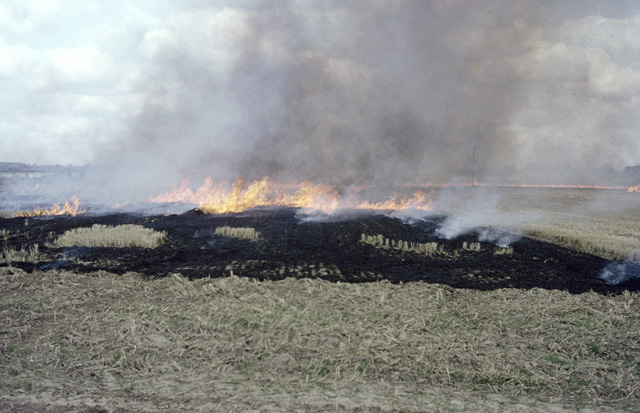Concentrated stubble burning around Diwali may compound problem: CSE
Though Diwali this year will be observed during the warmer part of the early winter, concentrated stubble burning in Delhis neighbouring states may compound the problem, the Centre for Science and Environment CSE said on Thursday.The air quality in Delhi-NCR starts worsening in October due to unfavourable meteorological factors such as low temperatures and wind speed, which do not allow dispersion of pollutants.A cocktail of emissions from firecrackers and stubble burning in neighbouring states further deplete the air quality.

- Country:
- India
Though Diwali this year will be observed during the ''warmer part of the early winter'', concentrated stubble burning in Delhi's neighbouring states may compound the problem, the Centre for Science and Environment (CSE) said on Thursday.
The air quality in Delhi-NCR starts worsening in October due to unfavourable meteorological factors such as low temperatures and wind speed, which do not allow dispersion of pollutants.
A cocktail of emissions from firecrackers and stubble burning in neighbouring states further deplete the air quality. The CSE said Diwali this year is being observed early in the season ''which means the warmer and windier conditions will help dilute the pollution that is staple of Diwali night celebrations''. Unlike previous two years, the smoke from the farm stubble fires has not overwhelmed the air quality of the region yet and rains in early October have also kept the air relatively clean so far. However, a prolonged spell of rains in early October has delayed paddy harvesting in parts of Punjab and Haryana that could lead to a spike in stubble burning incidents as farmers would be in a race against time to prepare their fields for the next crop.
''Previous years' data shows that Diwali night can add 300-600 microgram per cubic metre of PM2.5 to Delhi's air if the business-as-usual scenario continues,'' it said. Emissions from firecrackers and farm fires last year had pushed the capital's 24-hour average air quality index for the day after Diwali to 462, the highest in five years. ''PM2.5 concentration on Diwali night (8pm to 8am) last year stood at 747 microgram per cubic metre, 22 per cent higher than that on the 2020 Diwali night,'' the CSE said.
The levels on 2021 Diwali night were 4.5 times the average night-time levels recorded in the week preceding Diwali. ''It is noted that hourly concentrations can go beyond 1,000 microgram per cubic metre. In the 2021 Diwali, 26 of the 38 operational (air quality) monitoring stations hit the 1,000 microgram per cubic metre mark. In 2020, 23 out of 38 stations had hit the 1,000 microgram per cubic metre mark, while in 2019 the number stood at 22 stations,'' the green think tank said.
(This story has not been edited by Devdiscourse staff and is auto-generated from a syndicated feed.)
- READ MORE ON:
- Punjab
- Centre for Science and Environment
- Diwali
- Haryana
- Delhi
- Diwali night
ALSO READ
Punjab & Sind Bank's Ambitious Rs 3,000 Crore Infrastructure Bond Debut
Pioneering Regenerative Foodscapes in Punjab: A Workshop to Cultivate Change
Punjab's Fight for Farmers' Rights: Dallewal's Hunger Strike Intensifies
BJP Allegations Stir Tensions Ahead of Punjab Elections
Debate Over 'One Nation, One Election' Intensifies with Criticism from Punjab CM










